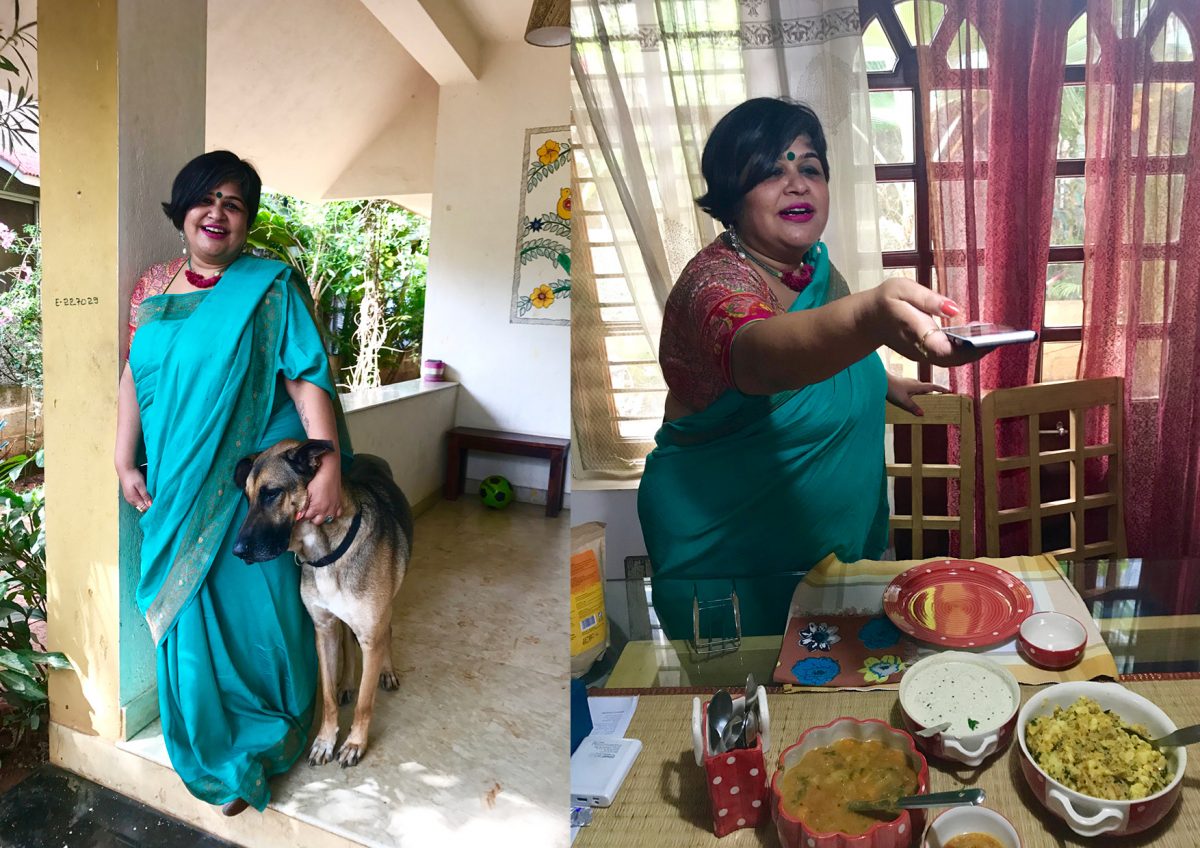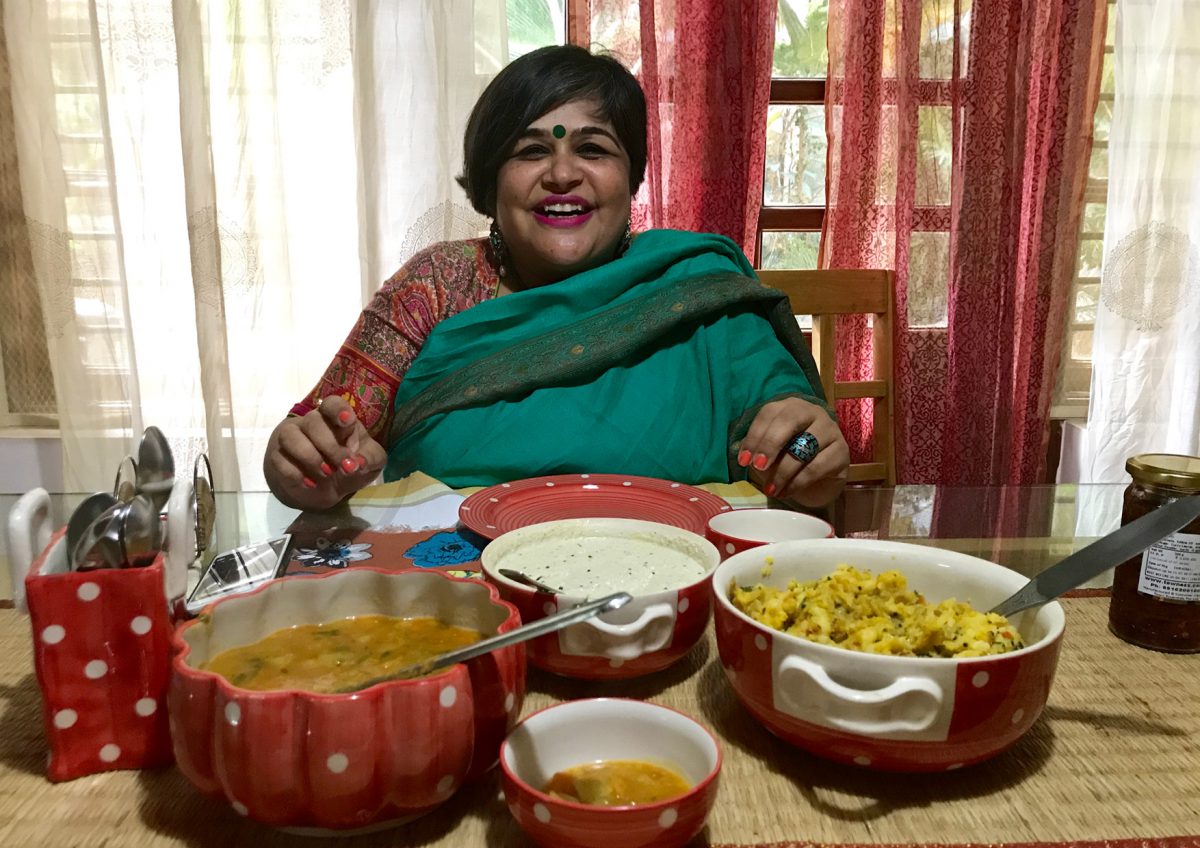17 06 17 — 22:35

I met Monika a few years back at a food blogger conference in Bangalore. She is well known in food scene and at the time was running her own baking business called Sin-a-Mon. At once I was drawn to her vivacious personality and since then have followed her various achievements on social media.
In 2015, I closely followed Monika participate in the 100 saree pact. Though she was not one of the founders, her stories around each of the sarees she wore, influenced many women around the world to share their stories. I was constantly delighted and in awe of Monika’s confidence in the 6 yards. She would put together playful combinations of patterns, colors and various kinds of handloom, thus pushing the boundary of how the saree is worn. Her really short bob cut hair; lovely accessories and larger than life smile shone through all her saree posts.
I recently met up with Monika at her beautiful home in Marathahalli in Bangalore where I hung out with her and Fluffy, her giant dog. Monika was wearing a beautiful sea green saree, with a gorgeous red blouse accessorized with dangling earrings and a green bindi. After a really fun candid chat and photo-shoot, I was also treated to some yummy dosas.
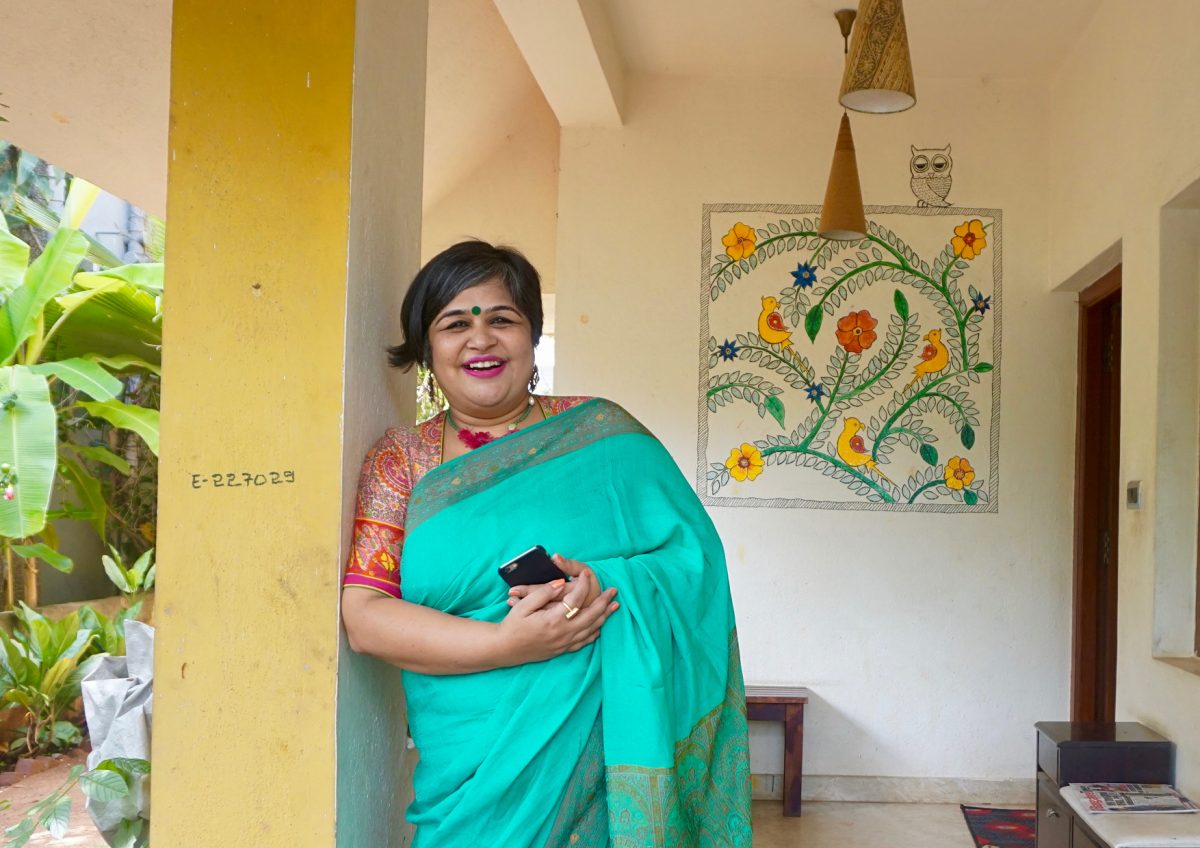
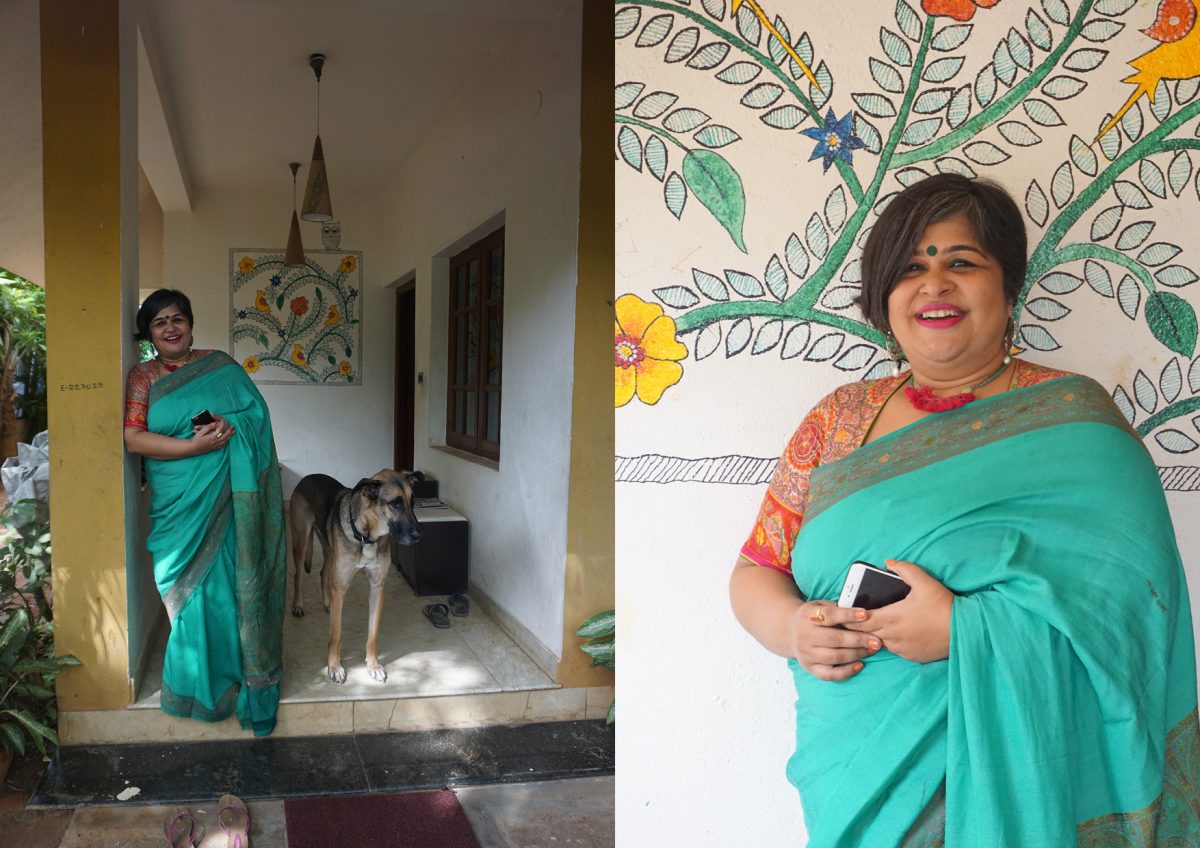
Monika Manchanda
Age: 41 years
Religion: I am born technically Hindu but do not identify with any religion at this age. I am increasingly becoming agnostic if not atheist. I was born in brought up in Delhi but I have now been living in Bangalore for the past 15 years.
What are your earliest memories wearing a saree?
I think my earliest memories wearing a saree myself would be taking my mum’s duppattas and wrapping them around me as sarees. My mum was a teacher and I saw her every morning getting dressed in a saree. Summers would be crisp cottons with beautiful light prints and the nice silks would come out in the winter. So I remember in our summer vacations I would take out her long dupattas and wrap it around me as a saree.
How old were you then?
I think 5 or 6 years old.
So you were aware of the saree then…
Yes, I was aware of saree then. I wore a proper saree for the first time when I was in 9th or 11th grade. If you grew up in Northern India, then on teacher’s day you became teachers and taught younger classes. I became a science teacher and wore my mum’s saree to school. I think by the time I came back home my saree was all over the place. That is my first memory of wearing a proper saree.
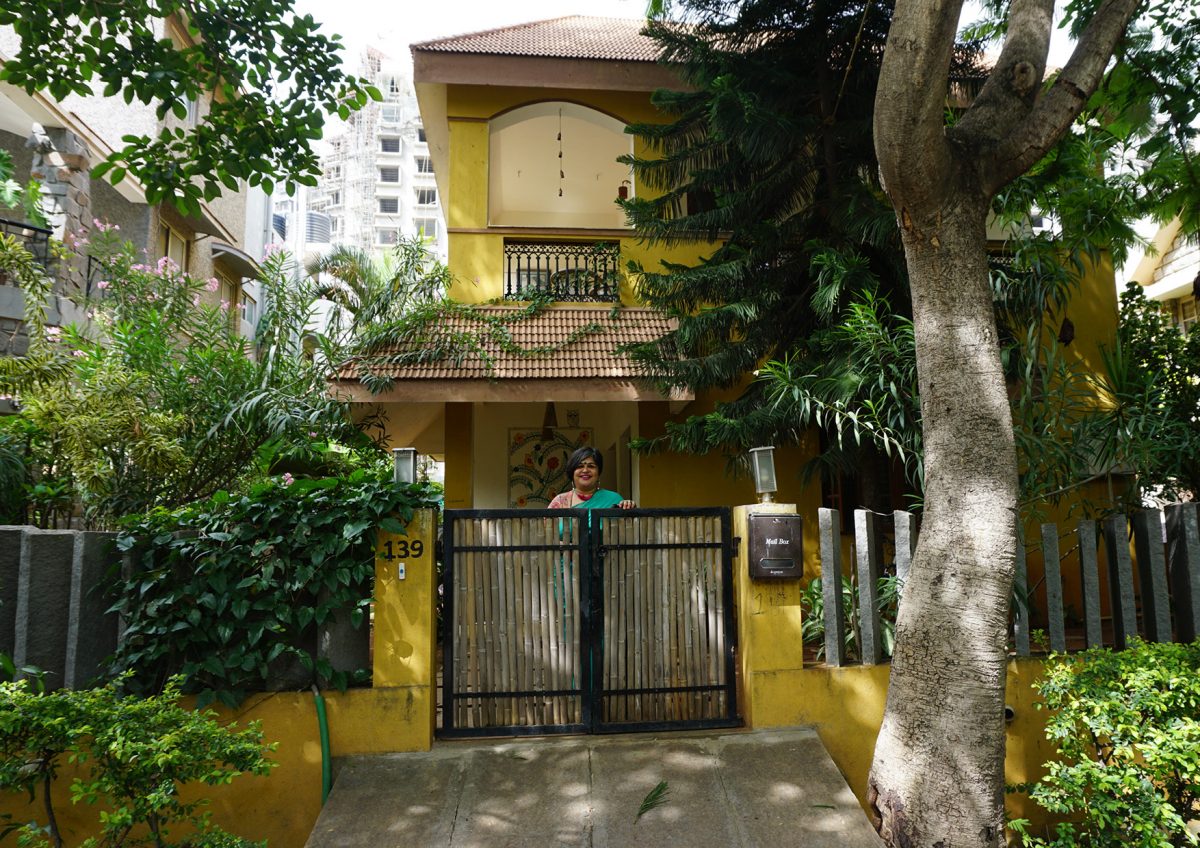
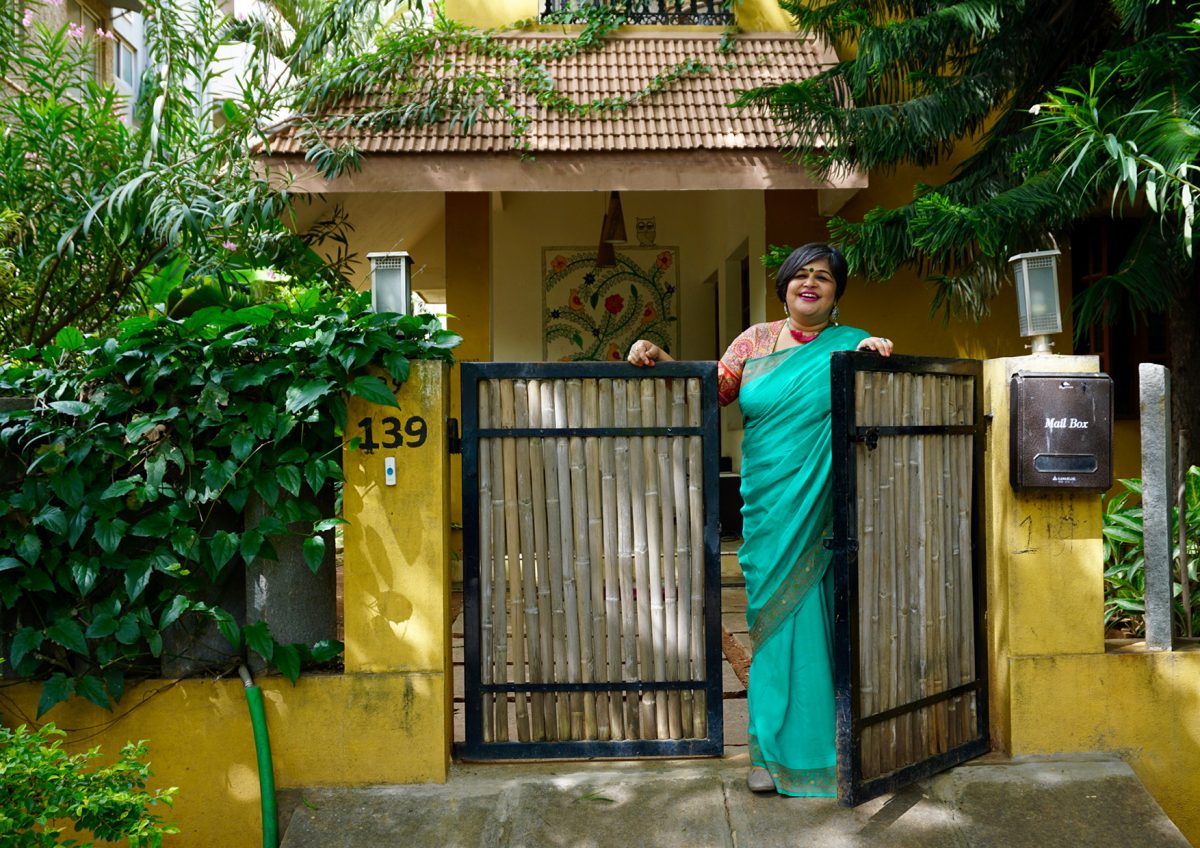
How often do you wear a saree?
I wear sarees pretty often. I love sarees. I am an ex IT engineers who is now into food and I remember when I was in a corporate IT job, I would wear a saree once in 10 days. The first few times I wore a saree people would ask me “Hey is it anything special?” Because the saree is no longer part of our dressing up as it used to be 20 years ago. Apart from that I like to wear the saree once a week, because I love the garment so much. That’s how often I wear it.
What do you look for in a saree?
Various things, depends on what you are buying a saree for. If it is just a regular wear saree then comfort. I also like quirky sarees, I have a saree with autos and chappals printed on it. Then I love traditional sarees. I have been on mission to collect sarees from every state of India. If you look in detail, every state has one or more kind of weaving and embroidery. So that has been my undertaking. So now I have a list I go by, I am on the lookout for sarees from places I don’t have. And sometimes, the patterns and colours just catch your eye.
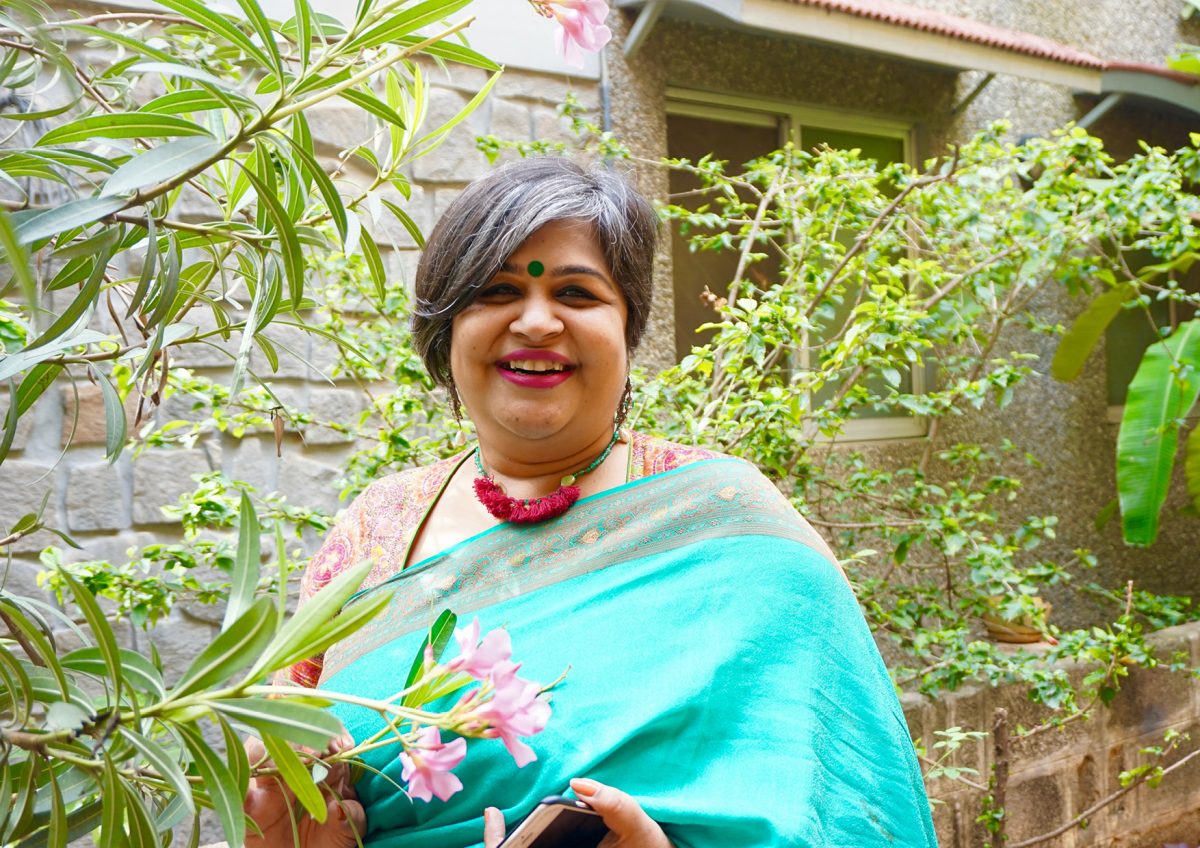
So how long does it take you to wrap a saree?
3 minutes. For me dressing up in a saree takes as much time as dressing up in a dress or salwar suit or jeans and a top. I would probably take more time dressing when I am wearing a saree because you are feeling good when wearing a saree and end up accessorizing yourself a little more than you do when wearing jeans and a tee. Otherwise wearing a saree just comes naturally after you do it a couple of times.
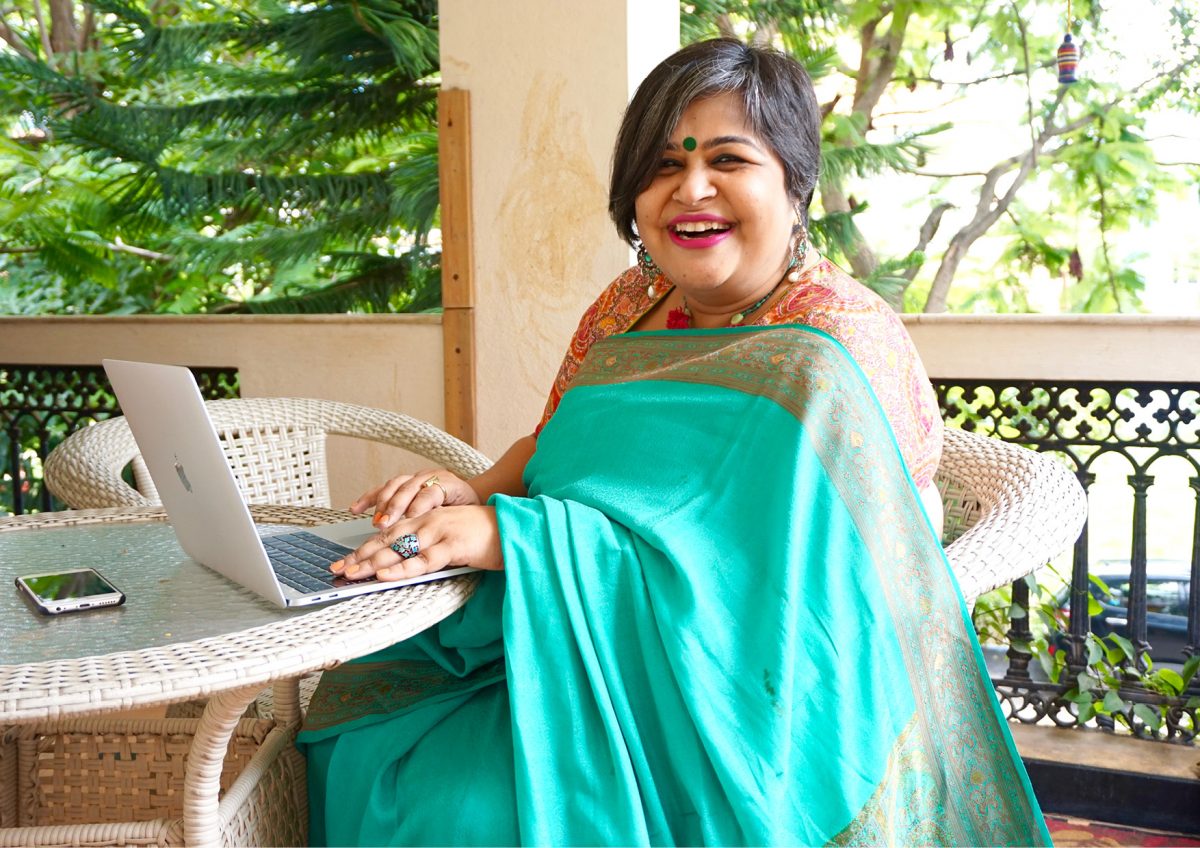
What made you rediscover the saree. When urban India is giving them up, you are one of the few people who has really brought saree to the forefront.
The fact that such a beautiful traditional garment was going away made me hold on to it a little longer. There is also a lot of nostalgia attached to it. I grew up seeing my mum & grandma wearing a saree everyday. My mother in law who lives with me, I don’t think I’ve seen her in anything else except a saree. She does everything in a saree; she even sleeps in a saree. We have come to a point where we say “Oh my god! We are not comfortable wearing a saree”.
I agree that it is much more fabric around you than when you are wearing a jeans and tee or a dress. It’s a garment closer to my heart. I also feel that a saree in a way carries also of India’s culture and heritage, its textile heritage, embroidery heritage. Our weaving styles are getting lost. There are some people who are adapting the weaves to modern dressing such as Ikkat dresses which I see a lot of right now. But inherently we are loosing so much of our culture and textile heritage by letting go of the saree. So it kind of pained me and I said ok I am going to wear sarees and I have been doing this for many years now.
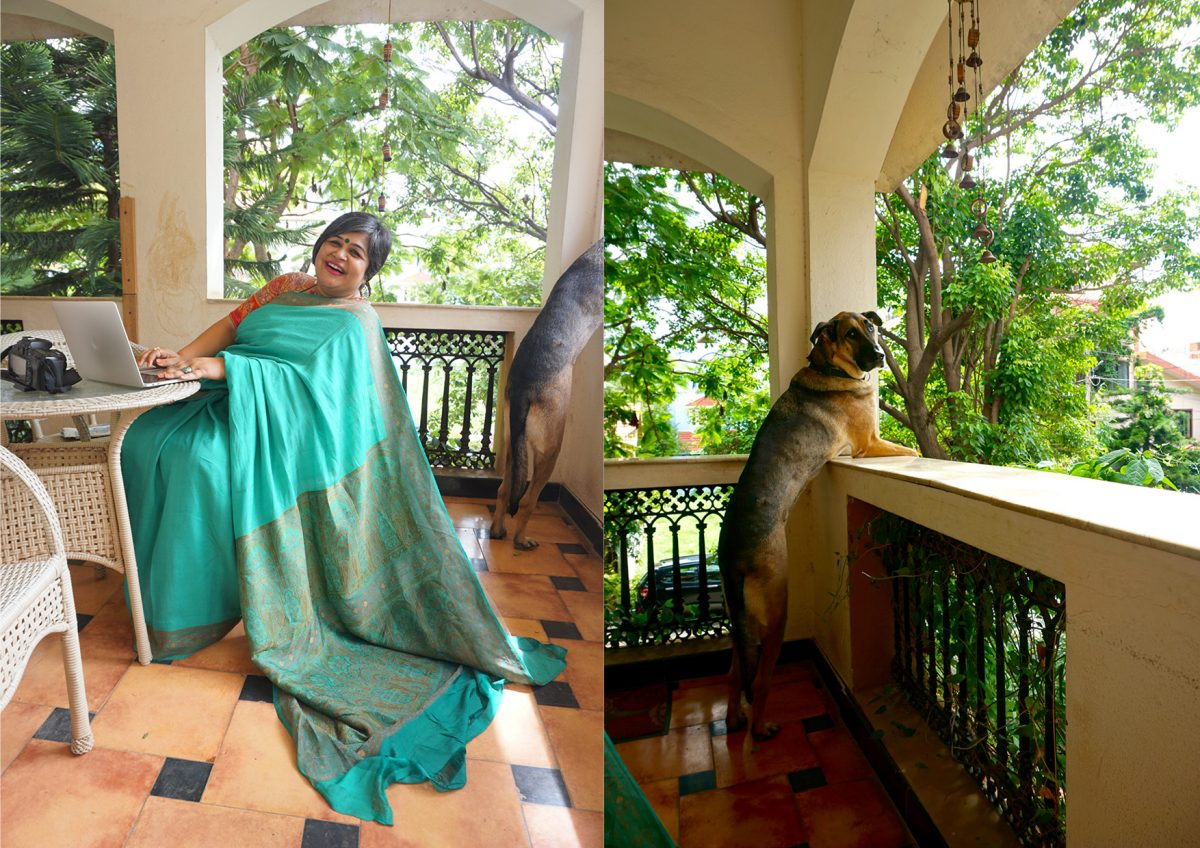
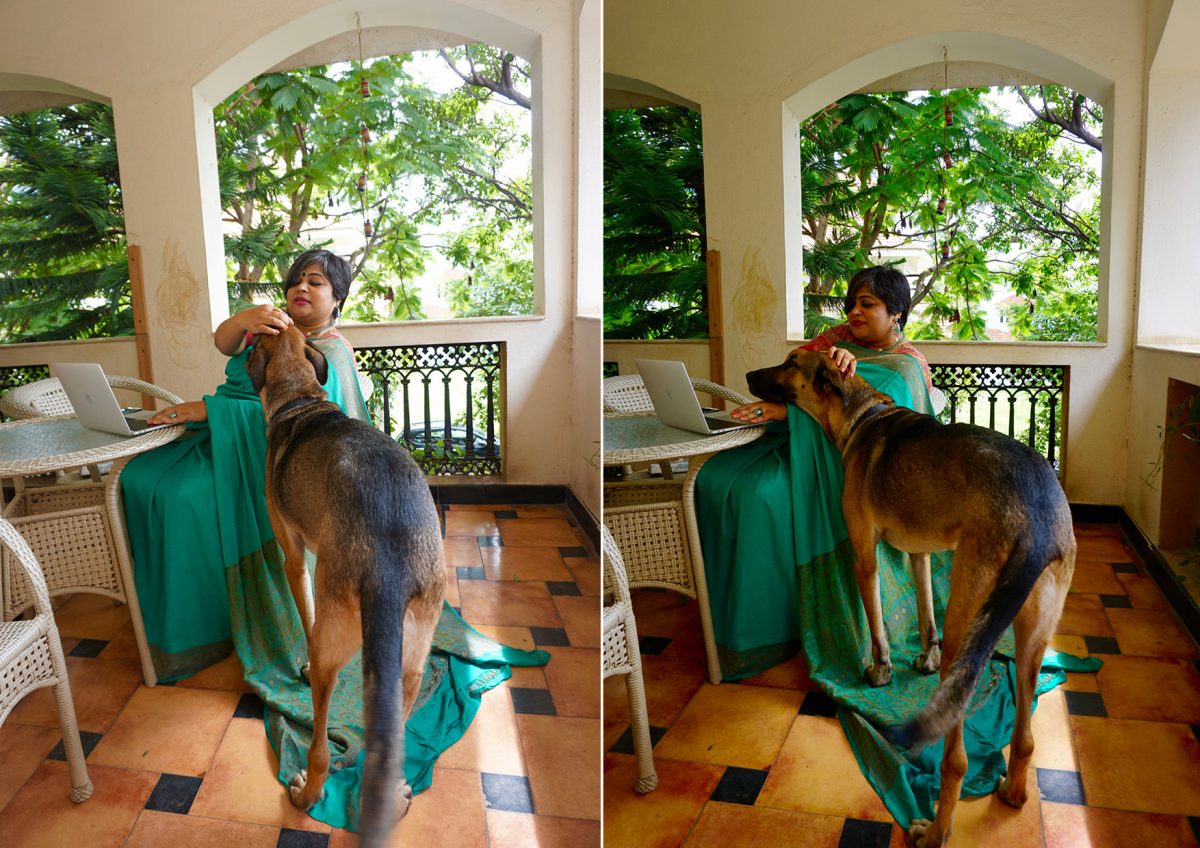
How did you successfully make it into a movement? On the #100sareepact
I didn’t start the movement, it was started by two friends Anju and Allie, who one fine morning were discussing the same thing how they don’t wear sarees and its become only shadiwear (marriage clothing). So they said they are going to wear sarees 100 times in a year. They put up a post and people joined in. I was one of the few people who joined in.
But you were a huge influencer in that
I would like to believe, yes! And it would be good to be an influencer in that because honestly the saree needs a revival. On the other hand, it needs a revival in our sect of people, our class because a saree has never gone away. Because look at the woman who comes home to work or look at the lady at the bank or go to a school. Everyone is still wearing a saree. The saree never went away. We stopped wearing a saree as an urban class. Very interestingly I also feel somewhere down the line our generation had this whole idea of becoming an independent woman. So we had to move away from everything that was forced on us. Right now I have a choice, so right now I choose a saree as happily as I choose a mini skirt or I choose a halter dress. But if you look at our mothers or grandmothers or look at that generation, they really did not have a choice, the saree was what they wore. In a way saree went away because we were revolting that little bit of force and getting away with your freedom. But I also think, for me, the point of bringing back the saree to my life was because equality and feminism is not about shunning what was there. It is also about having a choice in what I want to do. So if I want to wear a saree then why not. Its not making me any less equal or less feminist.
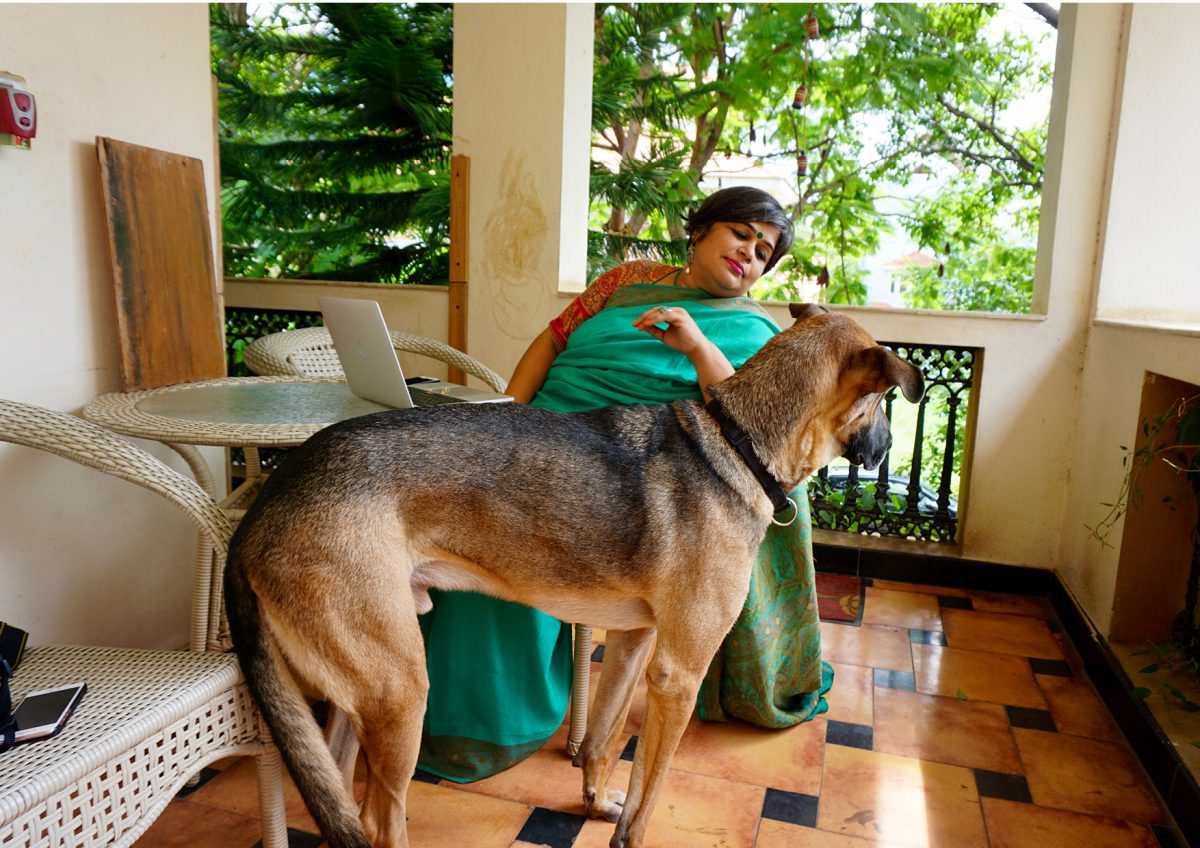
Will you share a story around the saree?
There are so many stories. The saree is not just a garment. It is memories woven around six yards. It often passes through generations, it is often passed from mother to daughter, from mother in-law to daughter in-law. You borrow sarees from your aunt and exchange sarees with your friends. And saree is a medium, which has tied so many stories. So I would say I have many many stories around the saree. I don’t know which on to tell you! (laughs her wonderful laughter)
